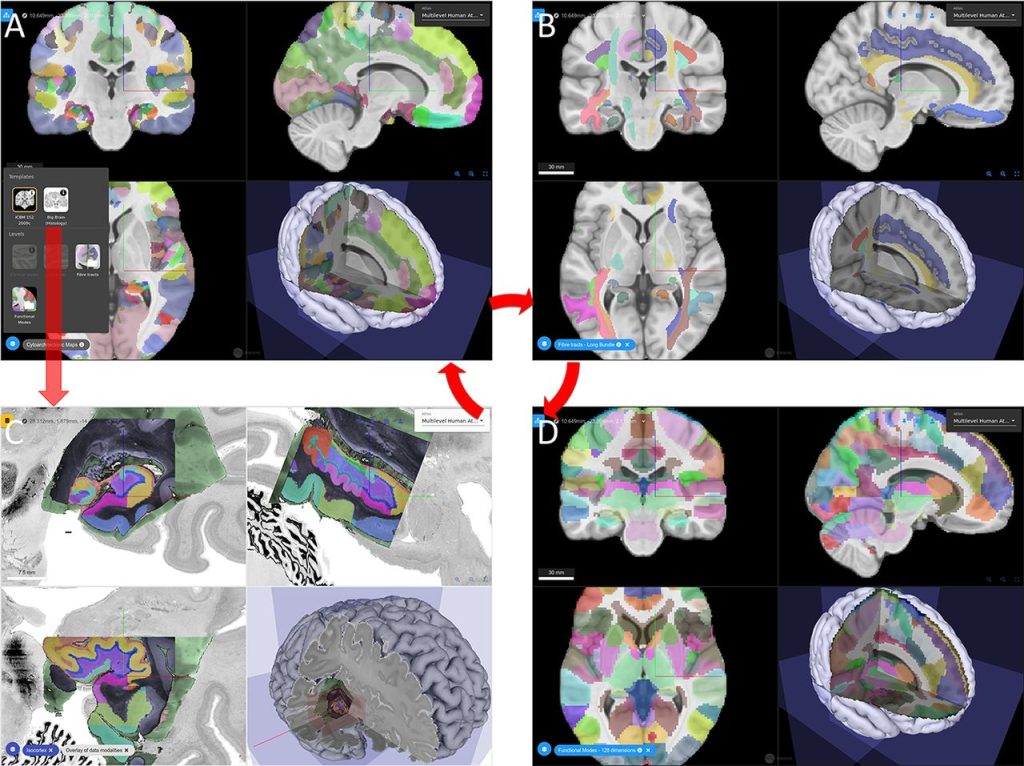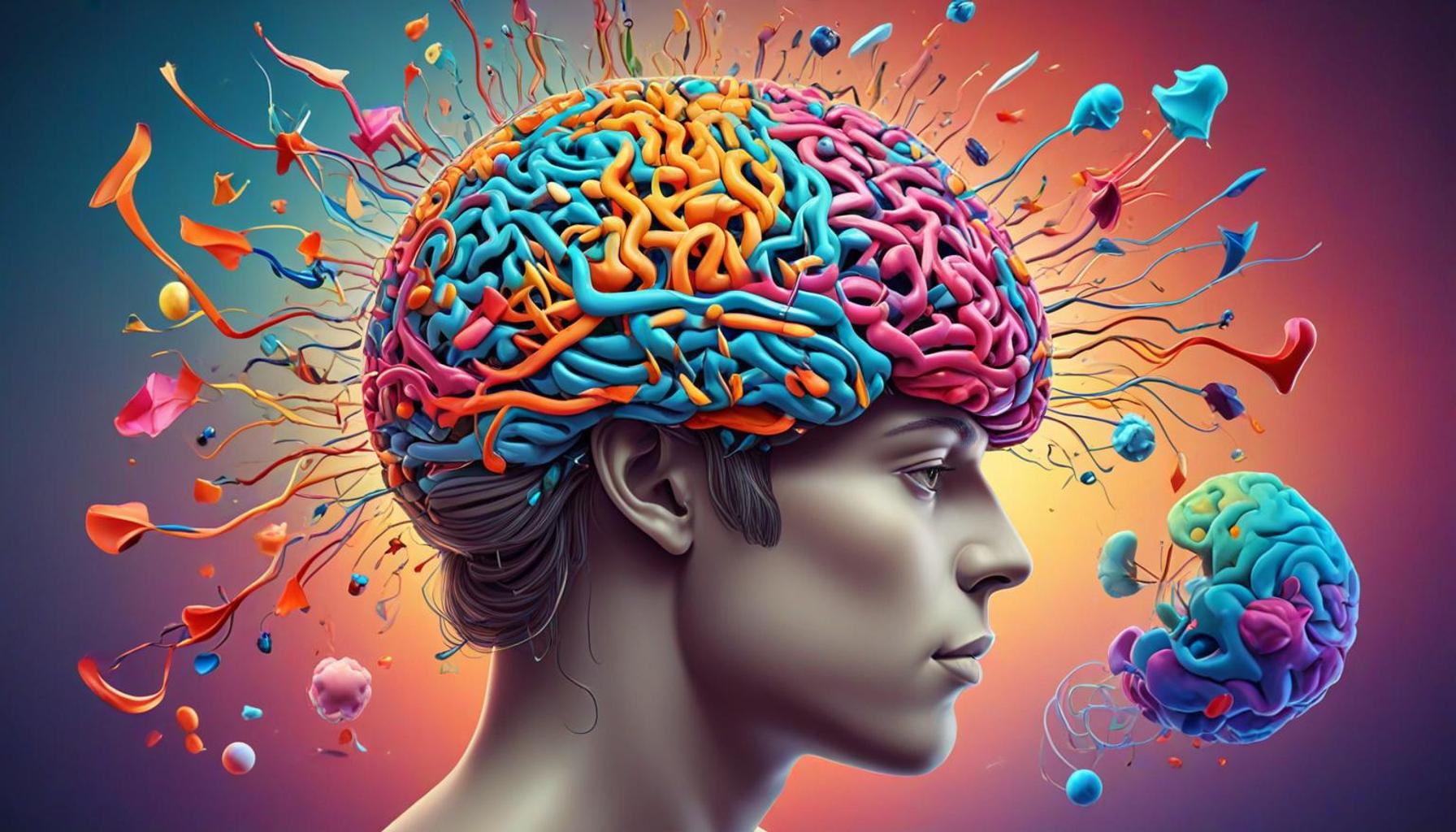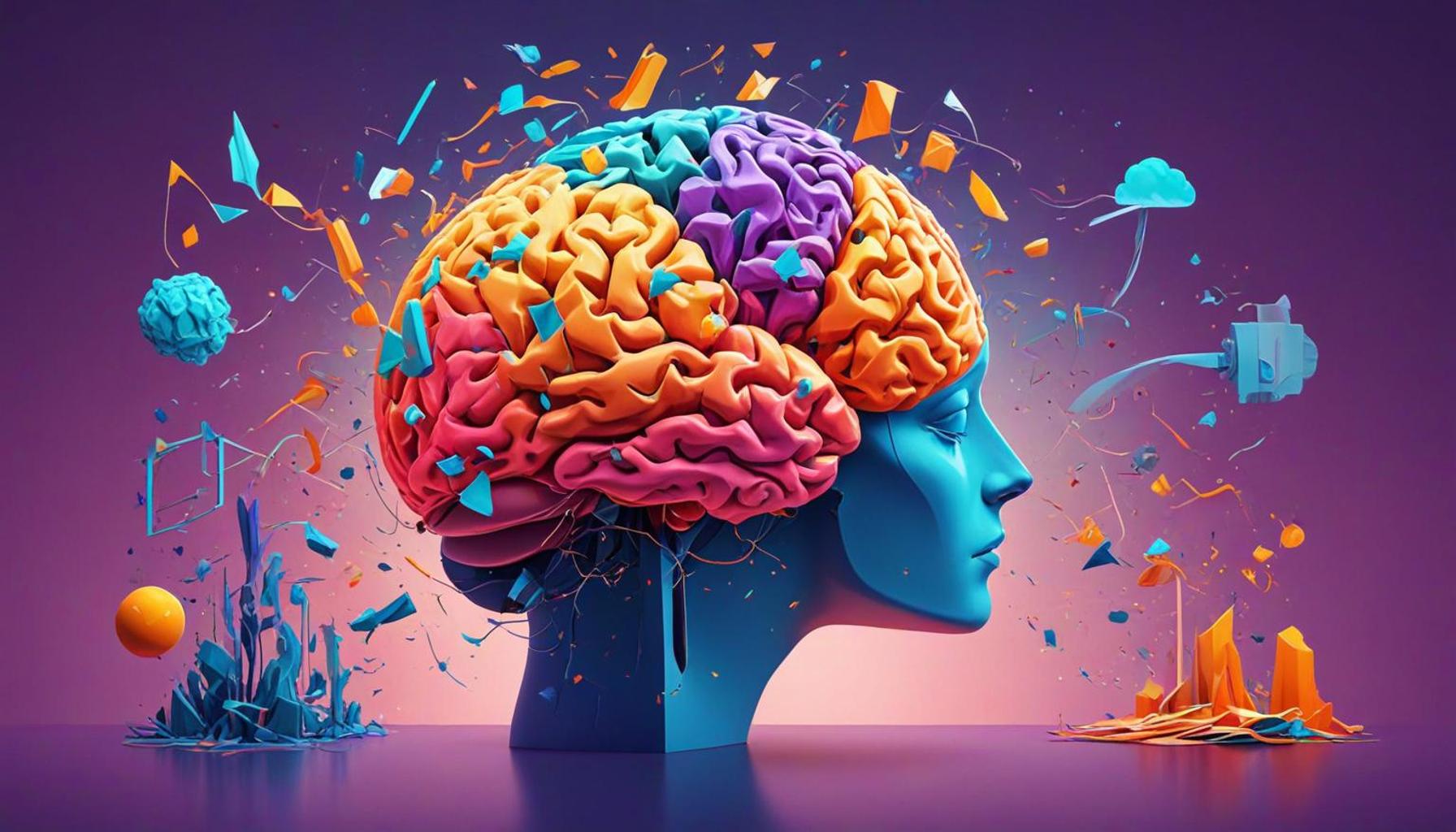Analog vs Digital Brain Games Key Cognitive Stimulation Differences

The Importance of Cognitive Stimulation in Modern Life
In today’s fast-paced world, brain games have emerged as powerful tools for enhancing mental agility and overall cognitive health. These games, whether experienced on paper or through digital interfaces, are designed to stimulate our cognitive abilities and sharpen our minds. As technology has progressed, the notable differentiation between analog and digital platforms has significantly influenced how we engage in mental workouts, each offering a unique set of benefits and challenges.
Analog brain games encompass a variety of formats that encourage problem-solving and critical thinking. For example,
- Puzzle books filled with Sudoku or logic puzzles appeal to our methodical problem-solving skills.
- Board games like Ludo or Scrabble not only challenge our intellect but also foster social interaction, often becoming the centerpiece of family gatherings or friendly competitions.
- Card games such as Uno or Whot? offer strategic challenges that stimulate thinking and memory while enhancing social bonds.
- Crossword puzzles engage our language abilities, expanding vocabulary and enhancing recall.
In contrast, digital brain games have flooded mobile devices and PCs, transforming how we interact with these stimuli. Popular examples include:
- Mobile apps like Lumosity and Elevate, which provide a variety of cognitive challenges tailored to the player’s ability level.
- PC games that mimic traditional board games but offer an immersive, visually engaging experience.
- Online platforms such as BrainMetrix, which enable gameplay against others globally, adding a competitive edge to cognitive exercises.
Both platforms deliver a rich array of advantages. Analog games emphasize face-to-face social interaction, which can enhance emotional connections and improve mental well-being. For instance, in a lively game of Scrabble among friends, laughter and banter flow freely, creating an environment conducive to cognitive health. Moreover, these games can be economically accessible in countries like Nigeria, where traditional games have cultural significance and can be enjoyed with minimal resources.
On the other hand, digital games provide immediate feedback and actionable insights through analytics, allowing players to track their progress over time. This real-time assessment can motivate users to push their boundaries and continuously improve. Additionally, many digital platforms are designed for personalization, adapting to individual preferences and capabilities, thereby offering tailored cognitive training.

This exploration of key cognitive stimulation differences between analog and digital brain games reveals much about their respective roles in our mental fitness routines. As we delve further, we invite you to consider which game type aligns best with your cognitive goals and lifestyle. Recognizing the strengths and weaknesses of each can help you create a balanced approach to keeping your mind sharp. Whether you find solace in the unhurried pace of a crossword puzzle or the competitive spirit of a mobile app, enhancing mental agility is a pursuit worth embracing in our ever-evolving world.
SEE ALSO: Click here to read another article
Understanding the Distinctions in Cognitive Engagement Techniques
As we dive deeper into the realm of analog vs digital brain games, it is crucial to grasp how each type uniquely stimulates our cognitive faculties. The underlying mechanics of these games drive varying styles of engagement, influencing how we think, learn, and interact with others.
Analog brain games often engage our senses in tactile ways, cultivating a physical connection to the game that digital platforms may struggle to replicate. For instance, the simple act of holding a pencil while solving a crossword puzzle can enhance concentration and memory retention. The kinesthetic element of writing physically reinforces neural pathways, making it easier to remember vocabulary or factual information. Additionally, the visual and auditory feedback in a lively game of cards with friends can enhance learning through emotional experiences, a concept well-documented in cognitive psychology.
On the other hand, the digital realm provides a different landscape entirely, mixing visuals, sound effects, and interactive elements to create engaging scenarios. Digital brain games leverage technology to simulate challenges that feel immersive and often more demanding. Complex gaming systems can adapt scenarios in real-time, adjusting difficulty to match the player’s cognitive level. This adaptability can be particularly advantageous for users in Nigeria, where varied educational backgrounds may necessitate different entry points in cognitive training.
To understand the full scope of their differences, consider the following key aspects:
- Social Interaction: Analog games encourage face-to-face interaction, which can foster a sense of community and emotional bonds among players. Digital games often lack this personal touch but can facilitate global connections through online platforms.
- Feedback Mechanisms: Analog formats typically provide feedback through discussion and debate, while digital games often feature instant score updates and progress tracking, making it easier for players to monitor their improvements over time.
- Availability and Accessibility: In Nigeria, traditional analog games are often more accessible as they require minimal resources and can be played virtually anywhere. Conversely, digital games necessitate devices and internet connectivity, which may be limited in some regions.
- Variability of Experience: The unpredictable dynamics of face-to-face gameplay can create a richer user experience in analog games, whereas digital games provide consistency and reliable gameplay mechanics, catering to users who favor routine.
The reactions and results of these varied approaches reveal the need for a multifaceted understanding of cognitive stimulation. While many may gravitate toward one format over another based on personal preferences, appreciating the value of both analog and digital brain games can lead to a more comprehensive cognitive exercise regimen.
Your journey in exploring key cognitive stimulation differences between these game types is just beginning. Whether you are inclined to join friends for a game of Ludo or challenge yourself with a puzzle app on your smartphone, each medium opens doors to unique opportunities for mental growth, allowing you to craft an enriching cognitive development pathway.
Analog vs Digital Brain Games: Key Cognitive Stimulation Differences
As we delve deeper into the realm of cognitive stimulation, it is essential to highlight the distinct advantages of analog and digital brain games. Each form offers unique benefits and appeals to different preferences and learning styles. Understanding these differences can enhance the experience and effectiveness of cognitive exercises.
| Category | Key Features |
|---|---|
| Analog Brain Games | Encourages tactile interaction and social engagement through physical play. |
| Digital Brain Games | Provides immediate feedback and analytics that help track cognitive progress. |
| Accessibility | Analog games require fewer resources and can be played anywhere. |
| Engagement | Digital games often have immersive graphics that enhance engagement. |
Choosing the right type of game can significantly impact the efficacy of cognitive training. Analog games foster a hands-on approach that can help strengthen fine motor skills and social interaction. Conversely, digital games can immerse users in complex scenarios that promote critical thinking and problem-solving abilities.
The cognitive stimulation derived from these games is crucial for mental health, especially in an age where technology increasingly dominates our lives. Exploring these diverse options can lead to finding the perfect balance between enjoyment and cognitive enhancement. Whether you prefer the nostalgic charm of analog or the advanced features of digital formats, both forms hold the key to unlocking potential in cognitive development.
CHECK OUT: Click here to explore more
Strategies for Cognitive Enhancement: Exploring Diverse Approaches
As we continue to unravel the key cognitive stimulation differences between analog and digital brain games, it is essential to examine the various strategies each medium employs to enhance cognitive function. Both formats engage distinct cognitive processes that can be tailored to fit individual preferences and skill levels.
In the realm of analog brain games, strategies often revolve around teamwork, strategy, and improvisation. Games such as Scrabble or Chess prompt players to engage in critical thinking, planning, and foresight. They encourage discussions and negotiations, helping players refine their communication skills and emotional intelligence. The varying strategies that players can adopt also promote creative thinking, where one can explore unconventional methods or responses to challenges during gameplay. In regions like Nigeria, where community gatherings and social interactions are paramount, these games provide excellent opportunities for strengthening both cognitive skills and social ties.
Digital brain games, however, often engage the player through competition and self-assessment. Many popular smartphone applications employ gamification techniques, which transform learning into a competitive challenge. Games that track progress and set milestones motivate players by providing immediate feedback. For example, apps designed specifically for cognitive enhancement, like Lumosity or Elevate, utilize algorithms to adapt difficulty levels to the player’s performance, meaning they can offer a customized experience aimed at improving memory, attention, and problem-solving skills. As a result, players can engage in a focused and structured way that can often lead to faster cognitive gains.
Moreover, the element of time pressure is a key differentiator in how each medium can stimulate cognitive activities. In analog settings, games can be played at a leisurely pace, which can aid in long-term retention of information. For instance, players in Nigeria might enjoy traditional board games over a family gathering, allowing for moments of reflection and strategic planning. In contrast, digital brain games often come with timed challenges requiring immediate decision-making, promoting speed and efficiency. This aspect of digital games can be especially beneficial for players looking to enhance cognitive agility and quick thinking.
Another critical factor in the comparison of analog and digital cognitive stimulation is the adaptability of skills derived from the gameplay. Analog games tend to focus on developing interpersonal skills, as players must read body language and emotional cues, fostering an awareness of social dynamics. Meanwhile, digital games often prioritize cognitive skills such as memory recall and pattern recognition, contributing to a wider range of mental agility. In the context of Nigeria’s diverse learning landscapes, this can mean that both formats hold unique advantages depending on individual needs, whether one is looking to enhance social skills or cognitive processing abilities.
Ultimately, recognizing the inherent strengths in both analog and digital brain games opens up vast possibilities for cognitive training strategies. This understanding paves the way for intelligent selection of games suited to specific goals, be it sharpening social interactions or boosting cognitive skills. Understanding whether you gravitate more towards engaging with friends over a board game or enjoy the solitary challenge of a digital puzzle can help you craft an enriching experience while navigating the captivating world of cognitive stimulation.
SEE ALSO: Click here to read another article
Conclusion: Navigating the Path of Cognitive Growth
In conclusion, exploring the key cognitive stimulation differences between analog and digital brain games illustrates a vibrant spectrum of opportunities for cognitive enhancement. While analog games foster social connections, creativity, and strategic thinking through face-to-face interactions, digital games provide an engaging and competitive atmosphere that emphasizes rapid decision-making and personal progress. This dynamic interplay between the two formats allows players to select pathways that align with their cognitive development goals.
For individuals in Nigeria, where community and interpersonal engagement often play a crucial role in daily life, analog games present an avenue for promoting teamwork and shared experiences. On the other hand, as the digital era continues to weave its influence into our lives, the accessibility and tailored challenges of digital brain games can efficiently cater to those seeking to enhance skills such as memory and problem-solving in a fast-paced setting. Thus, both media not only engage different sets of cognitive processes but also cater to varied preferences, facilitating a richer understanding of one’s cognitive strengths.
Ultimately, embracing the strengths of both analog and digital brain games can lead to a well-rounded approach to cognitive stimulation. As you embark on your cognitive journey, consider balancing these formats to forge an enriching experience. Whether gathered around a game board with family or training your mind with a mobile app, each experience holds the potential to enhance cognitive capabilities in unique and meaningful ways. As you discover your preferences, you will pave the way for not just personal growth but also a greater appreciation of the art of play in all its forms.


